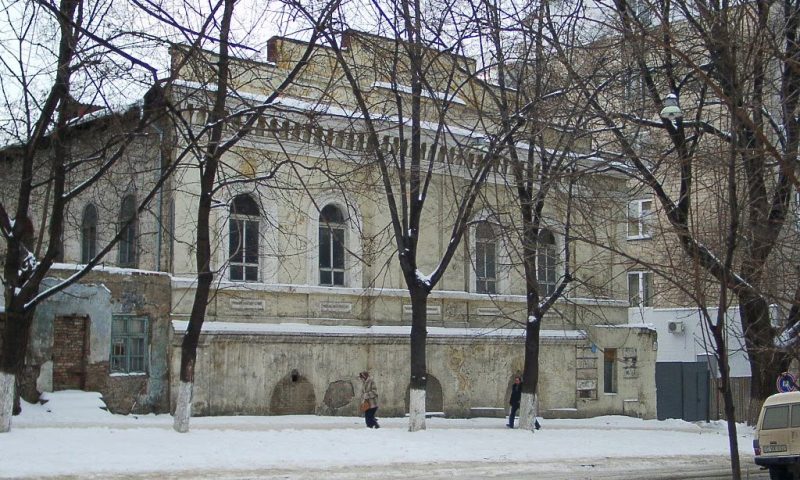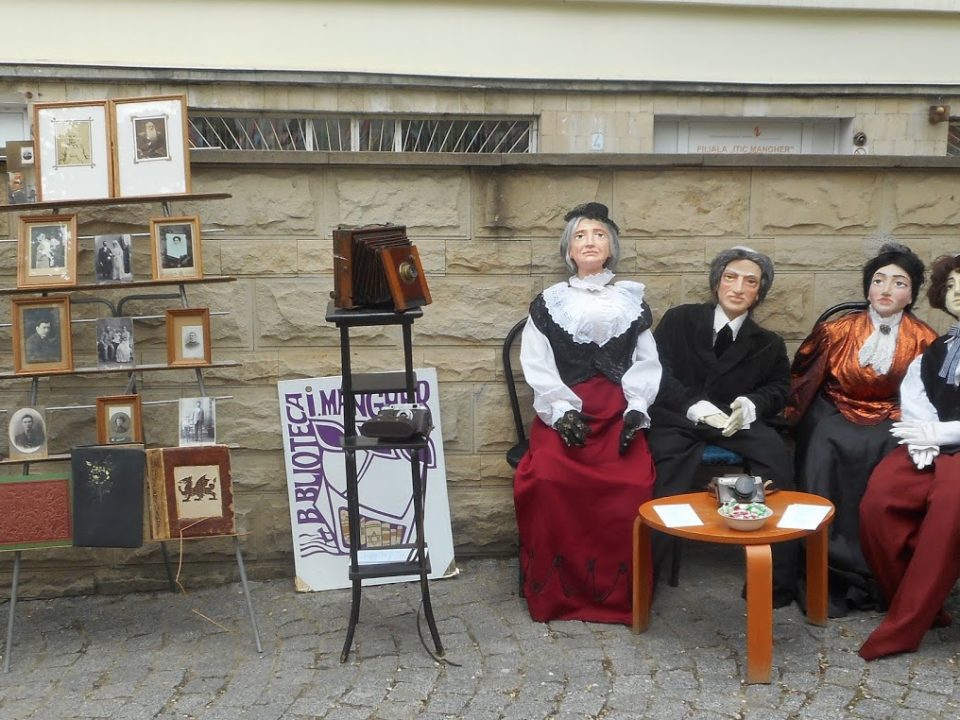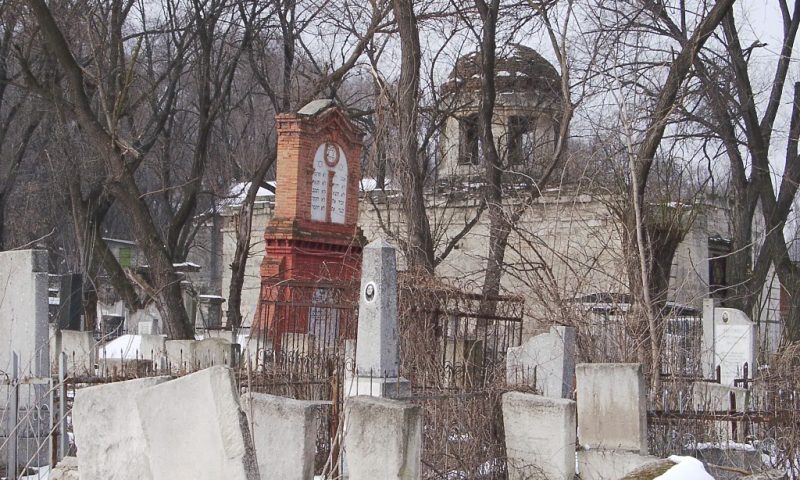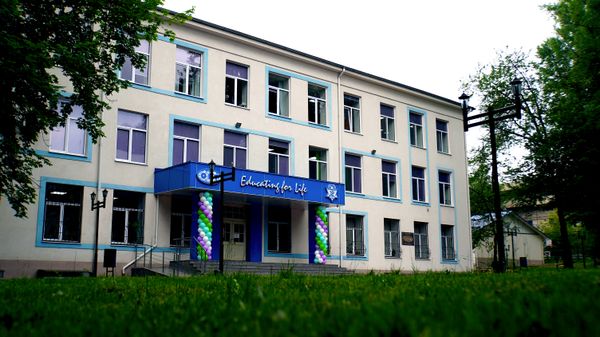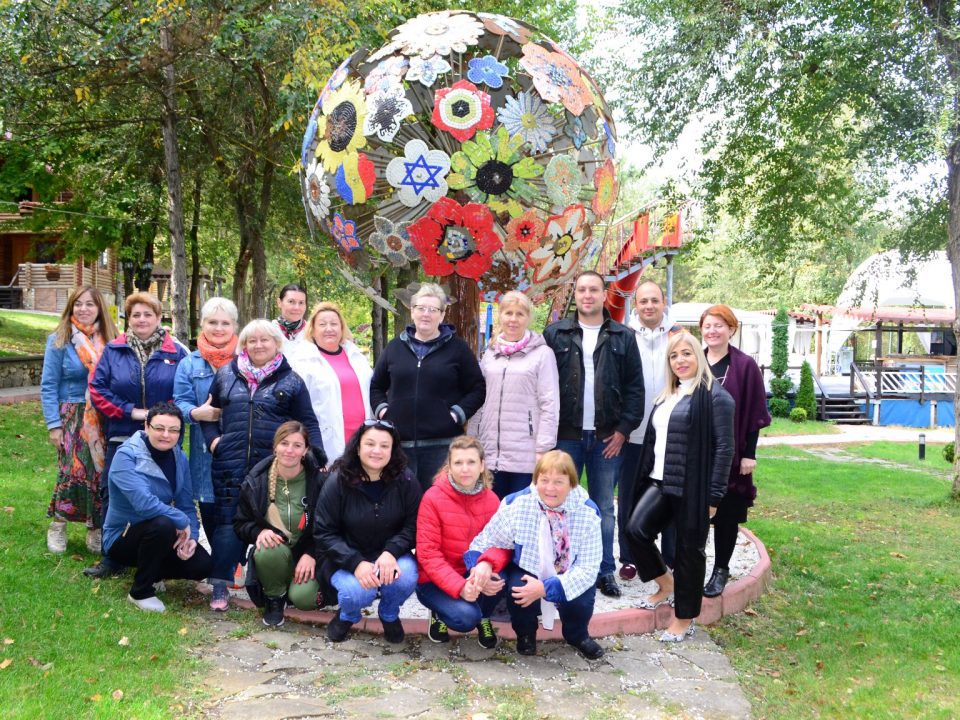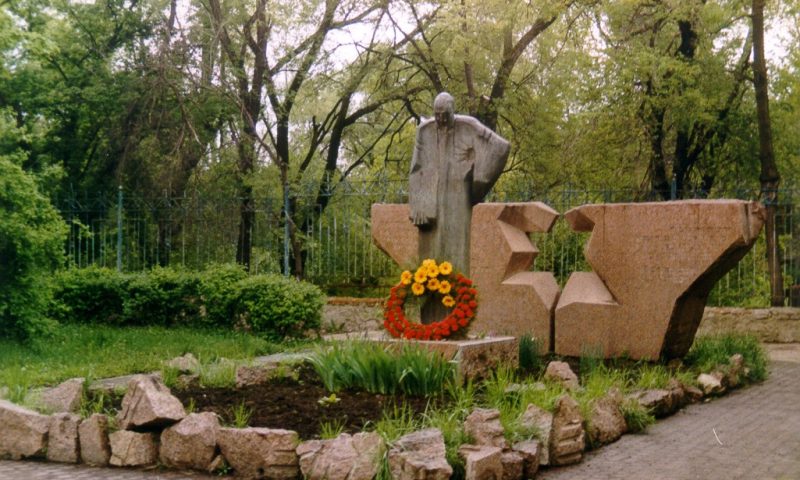At the beginning of the 19th century in Chisinau, it became necessary to create a new large Jewish cemetery. Traditionally, it was decided to establish it on the border of the city. The area near the so-called Skulyanskaya slingshot (today Milano Street) was chosen. The first burials date back to 1800. The Jewish cemetery was officially opened in 1825.
In Soviet times, the lower part of the cemetery was destroyed several times. On Pesach in 1957, a large part of the lower part of the cemetery was destroyed, and a park was laid out in its place. Tanks, tractors and even explosives were used to destroy the graves.
A la primera meitat del segle XIX, a l’aleshores límit de la ciutat (avui n’és el centre), es va construir una casa de pregària per a llenyataires. Es deia Lemnaria Veche. A principis del segle XX, aquest local esdevé un complex per a venedors de llenya. El conjunt consta d’una sinagoga, una casa de pregària (després també es va donar la condició de sinagoga) i un petit caravanserraig on descansar els portadors i els comerciants de llenya. Les dues sinagogues van ser confiscades l’any 1940 per les autoritats soviètiques. Als locals de la sinagoga es va obrir una planta experimental de l’Acadèmia de Ciències de Moldàvia. Ara es va convertir en Centre Cultural Jueu.
Lemnaria Veche pertanyia a les famílies Livshits i Bezinover.
The Hay Synagogue, as a prayer house, is on the lists even before 1850. In 1886, it was built and received the status of a synagogue. The synagogue was built in stone and covered with a metal roof. A large courtyard adjoined the building. In 1939, three synagogues at once were being built in the courtyard. A yeshiva worked at the synagogue. The neighboring territories belonged to Jewish families, which could contribute to the expansion of the synagogue space. By 1940, the synagogue building and all the facilities inside the courtyard were in very good condition. In 1940 it was confiscated by the Soviet authorities. In 1941, the Gestapo was located in the buildings and cellars. After 1944, there was an employment office here.
La biblioteca que porta el nom d’Itzik Manger va ser una de les primeres creades en el marc de les biblioteques de les minories nacionals de Moldàvia. Inaugurat el febrer de 1991. Unes 10 mil persones utilitzen els fons de la biblioteca. La biblioteca té una gran col·lecció de llibres de tots els temes, inclòs el més gran del país relacionat amb els temes jueus.
La biblioteca que porta el nom d’I. Manger és una branca de la xarxa de biblioteques municipals. De fet, és una mena de centre cultural jueu. La biblioteca és visitada per unes 140 mil persones durant l’any. El fons té més de 50 mil unitats i es dediquen a les branques més diverses de la ciència i la cultura.
At the beginning of the 19th century in Chisinau, it became necessary to create a new large Jewish cemetery. Traditionally, it was decided to establish it on the border of the city. The area near the so-called Skulyanskaya slingshot (today Milano Street) was chosen. The first burials date back to 1800. The Jewish cemetery was officially opened in 1825.
In Soviet times, the lower part of the cemetery was destroyed several times. On Pesach in 1957, a large part of the lower part of the cemetery was destroyed, and a park was laid out in its place. Tanks, tractors and even explosives were used to destroy the graves.
El Liceu Tecnològic ORT, que porta el nom de BZ Herzl, es va establir l’octubre de 1991. Va ser la primera escola secundària jueva laica número 22 de la República de Moldàvia. L’any 2001, va rebre el nom de Liceu Tecnològic que porta el nom de BZ Herzl.
El liceu va canviar la seva ubicació tres vegades. Durant més temps va estar al carrer Romana, a l’antic barri jueu de la ciutat. El carrer es va anomenar Asiatskaya l’any 1903, i al costat hi havia un pati que va guanyar fama a les històries de l’escriptor rus VG Korolenko, que va descriure les atrocitats i els assassinats del pogrom de 1903.
L’agost de 1992 es va obrir l’escola jueva núm. 15 a Chisinau. L’any 2005, l’escola es va transformar en un liceu que porta el nom del gran filòsof jueu Rambam.
El Liceu és una escola pública laica. El treball i les activitats docents del liceu compten amb el suport de la Comunitat Jueva de la República de Moldàvia, Agudath Israel a Moldàvia, JAFI, ORT i altres organitzacions jueves a Moldàvia i Israel. Professors d’Israel ensenyen història hebrea i jueva com a voluntaris al liceu. Més de 40 professors treballen al liceu. Els estudiants del liceu participen en olimpíades, incloses les internacionals. Molts guanyen premis. Al liceu, gràcies a l’esforç dels estudiants i professors, es va organitzar un petit museu commemoratiu de l’Holocaust.
Monument to the Chisinau ghetto victims was created in memory of the Jews killed during the Second World War. The ghetto was opened in Chisinau on July 20, 1941. By May 1942, almost all the prisoners were either destroyed or sent to in Transnistria. The monument was erected at the place where it was assumed, erroneously, that the gates to the ghetto were located.
The Chisinau ghetto was created in July 1941. The last group of people was sent for destruction to Transnistria in May 1942. Only three Jewish families, 12 people, survived the war in the ghetto. More than 20 thousand people died from starvation, torture, and executions. The monument to the prisoners is located near the place where the ghetto wall passed.
The monument was created in 1978. Located in a wasteland, near the highway leading towards the town of Orhei. The author of the monument is a well-known muralist and sculptor, Aurel David. The monument is unusual, like all the works of this author. The monument represents two arms, shot through and wrapped with barbed wire. The work was not understood by the official leaders, and the real first presentation of the monument took place only in 1991.
The Monument to the Victims of Fascism is located near the place where executions were carried out in the period 1941-1944. In 1941 to 1942, mainly Jews – prisoners of the Chisinau ghetto – were shot there. The killings were carried out in an abandoned mine, which is located below the monument.


